Derinkuyu: The Ancient Underground City That Once Home To 20,000 People
Derinkuyu Underground City is one of the most fascinating and largest underground cities in the world.
This multi-level city is located in the Cappadocia region of Turkey, near the modern town of Derinkuyu in Nevşehir Province.
It stretches about 85 meters (280 feet) deep into the earth.
It’s big enough to have housed up to 20,000 people, along with their livestock and food supplies.
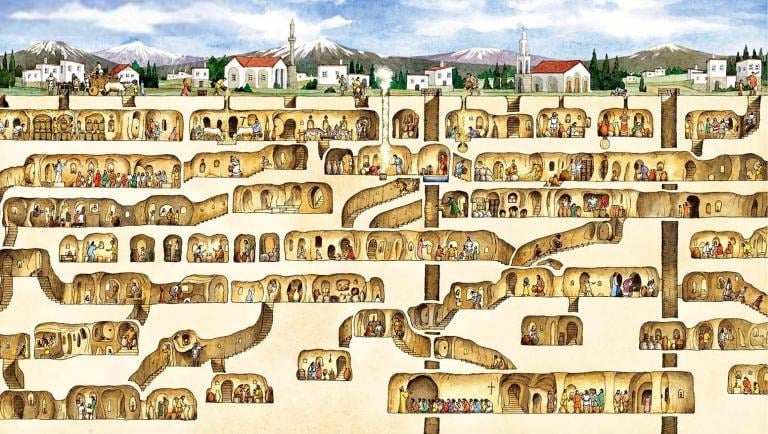
A Hidden City Underground
Derinkuyu Underground City is a marvel of ancient engineering.
The city had everything needed for people to live comfortably for extended periods.
There were wine and oil presses, stables, cellars, storage rooms, kitchens, and even chapels.
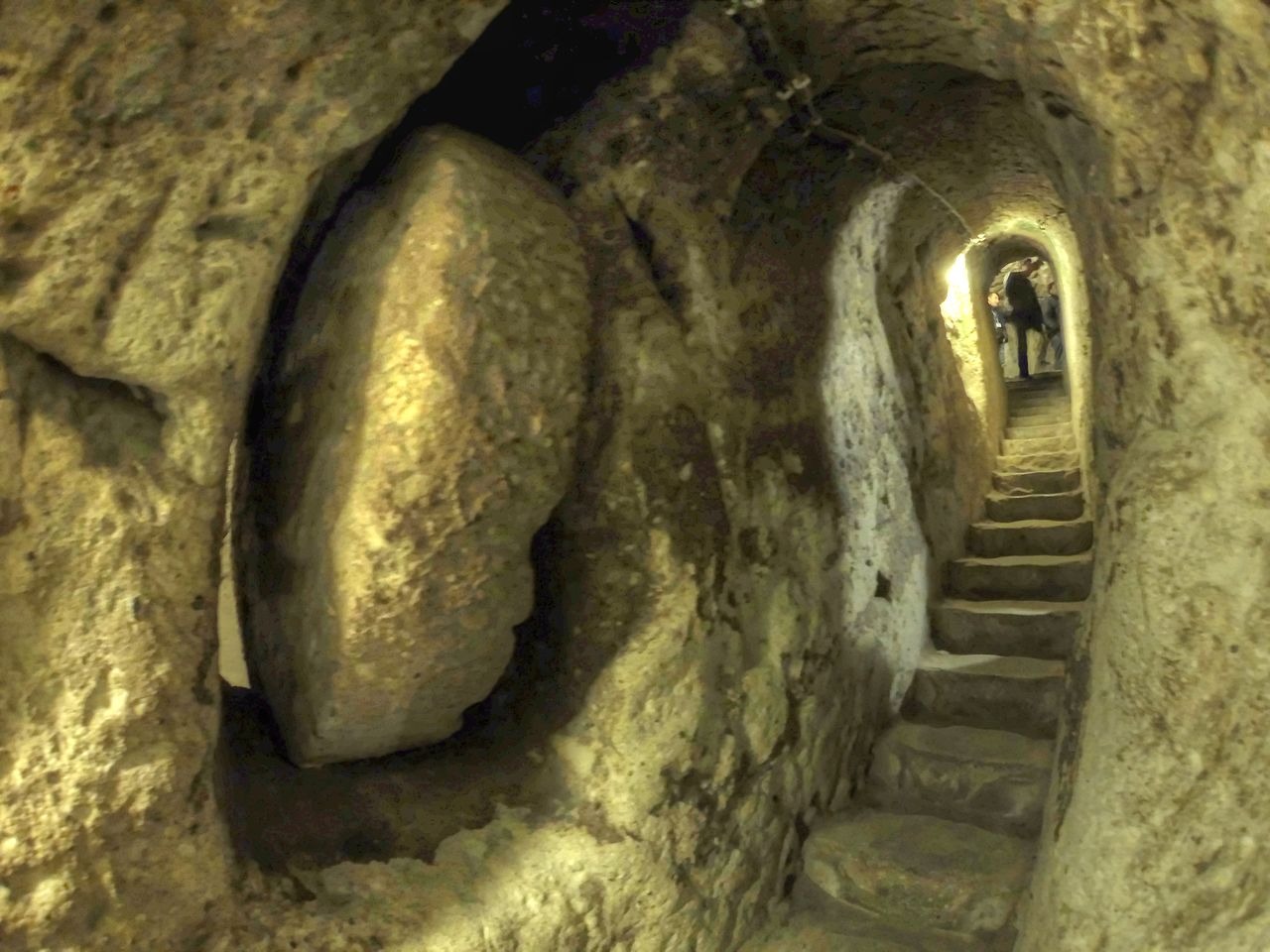
The Architecture and Features of Derinkuyu
The city was designed with large round stones that could be rolled into place to block entry in times of danger.
The tunnels are interconnected by narrow corridors, designed to prevent easy access by enemies.
The city also had a large 55-meter (180-foot) ventilation shaft, which doubled as a well.
This shaft provided water to both the people living underground and those above ground in the village.
This ingenious system ensured a continuous supply of fresh air and water, even when access to the outside world was cut off.
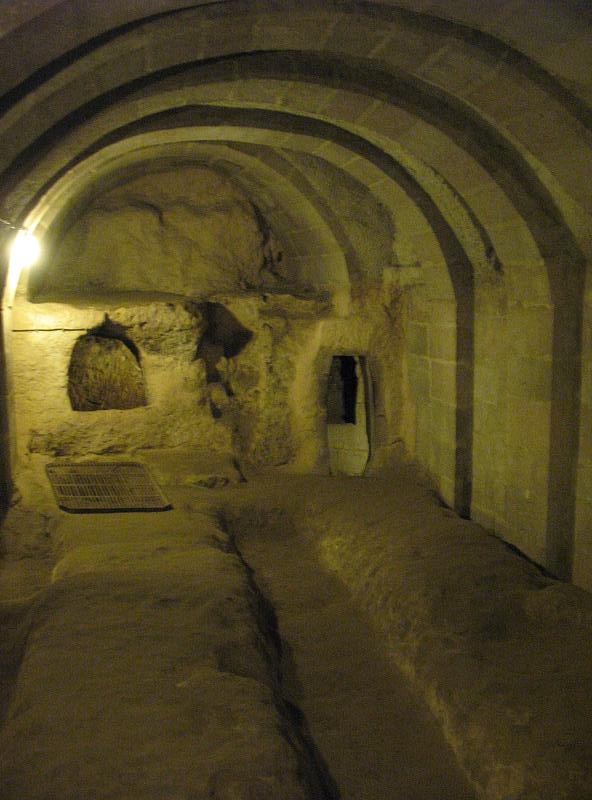
Starting from the third floor, a series of vertical staircases lead down to a church on the fifth and lowest level.
One of the unique features of Derinkuyu is a room with a barrel-vaulted ceiling on the second floor.
It is believed to have been used as a religious school.
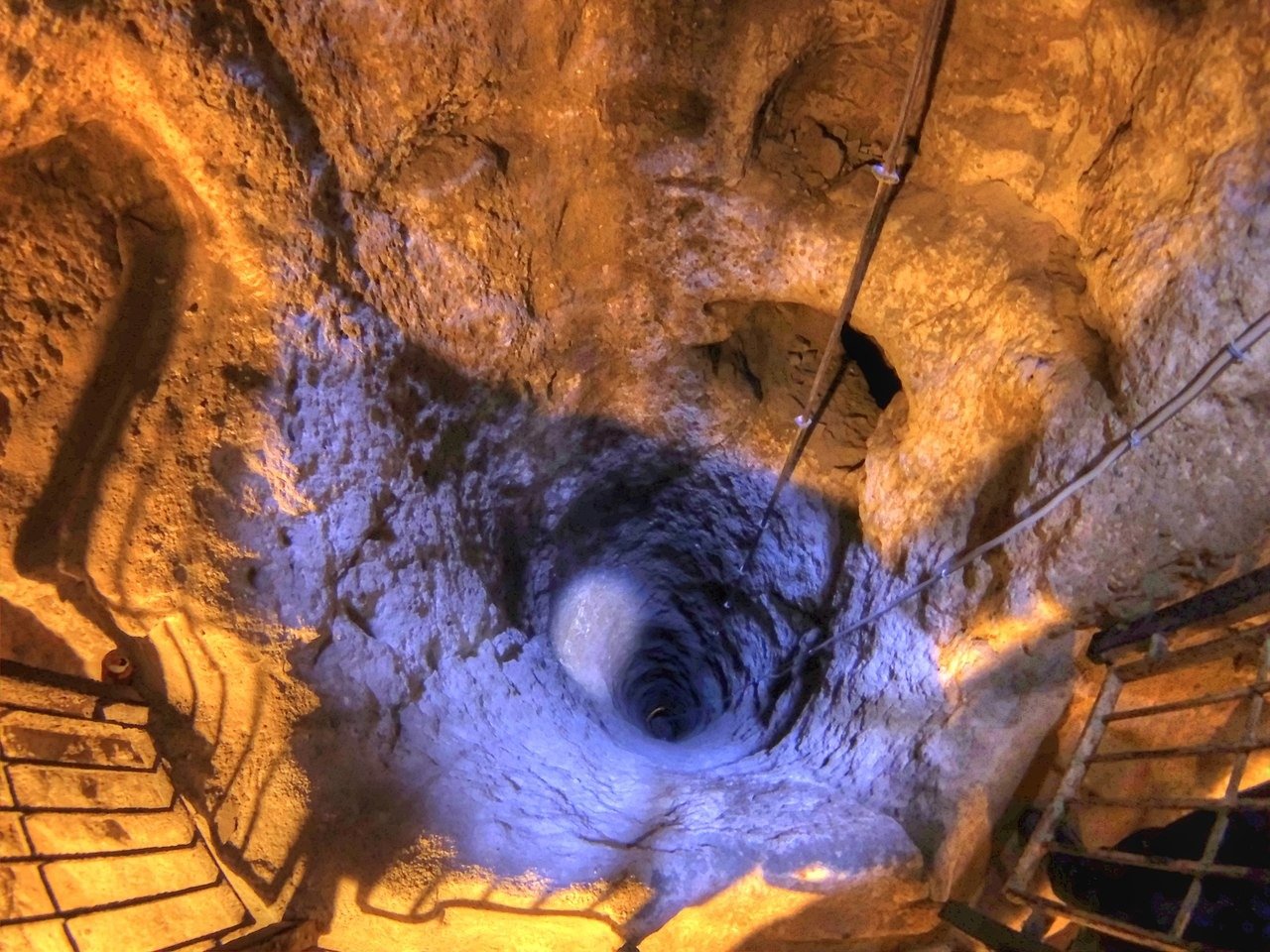
History Of Derinkuyu
The origins of Derinkuyu trace back to the 8th and 7th centuries BCE when the Phrygians first began carving living spaces into the region’s soft volcanic rock, known as tuff.
The city was later expanded during the Roman period by Greek-speaking Christians.
They deepened the caverns into complex, multi-level dwellings complete with chapels and Greek inscriptions.
Especially by the Byzantine era (780–1180 CE), the city was expanded and used as a refuge during the Arab-Byzantine wars.
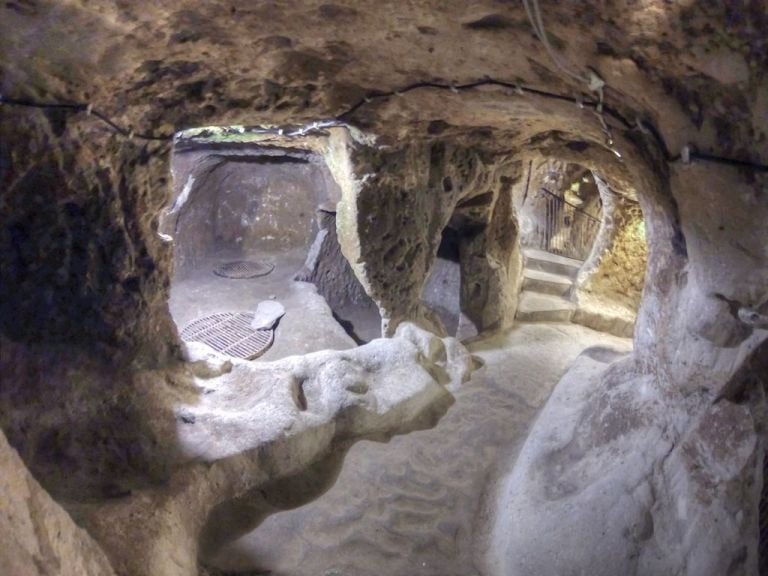
The city was connected to other underground complexes, including Kaymakli, through a series of tunnels stretching 8–9 kilometers (5.0–5.6 miles).
These subterranean sanctuaries continued to serve as protection against Mongolian invasions in the 14th century and later during the Ottoman period.
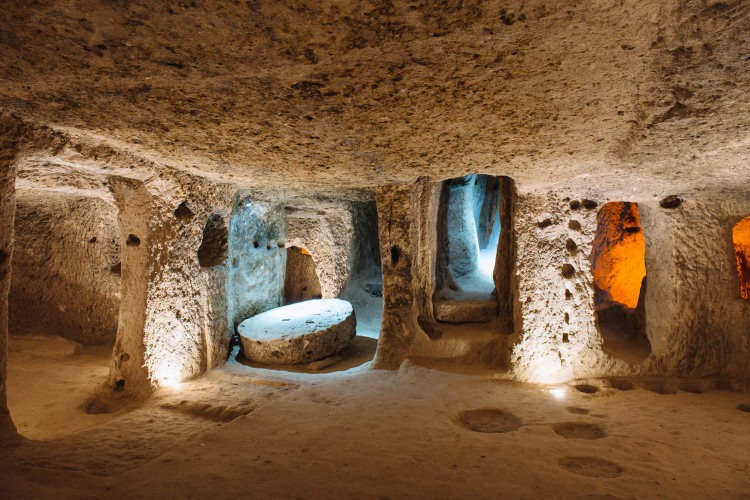
Even as recently as the 20th century, the underground city provided shelter.
In 1909, some residents took refuge in these chambers during periods of unrest.
However, by 1923, after a population exchange between Greece and Turkey, the Christian inhabitants who had lived in Derinkuyu were expelled, and the city was abandoned.
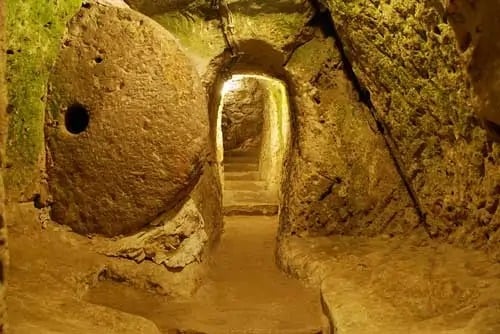
Rediscovery and Exploration
In 1963, Derinkuyu was rediscovered when a local resident accidentally uncovered a hidden room while renovating his home.
Further exploration revealed the extensive network of tunnels and rooms, and by 1969, the site was opened to visitors.
Today, about half of the underground city is accessible to the public.

Derinkuyu Today
Today, Derinkuyu Underground City is one of Turkey’s most popular tourist destinations.
Since its discovery in 1963 and partial opening to the public in 1969, the site has become a UNESCO World Heritage Site.

